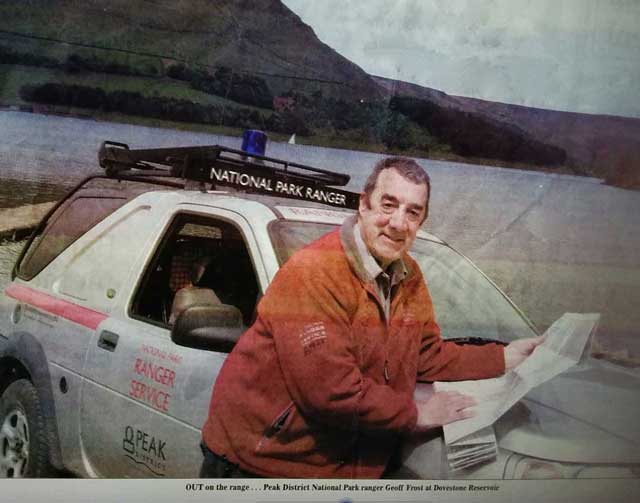The Dove Stone region is rich in flora and fauna, from around the reservoirs, inside the woodlands, or on top of the high moors. But whether you will see the fauna depends much on whether you are quiet or alone and have much patience - or luck. Even smallish groups of walkers seeking to find a stoat, a weasel or perhaps even a fox will usually be disappointed as most creatures are shy and frightened of human presence and will hide away.
The best times I have witnessed the play or the chase of an animal is when I have been alone, often day-dreaming on a patrol and not thinking about much at all. And how many lone ramblers have never been startled by the sudden cackle of a hidden grouse erupting from the heather?
It would be too onerous (and too time-consuming) to list and describe everything about the birds, the mammals, the flora, and insects etc that can be found in the Dove Stone region. I am bound to miss out some species or other. A good place to learn about these things is by looking on the RSPB website http://www.rspb.org.uk/discoverandenjoynature/seenature/reserves/guide/d/dovestone/ for Dove Stone which encourages visitors to record sightings and should have better up-to-date information about the area than this website.

Saddleworth Moor in early July speckled with cotton grass


Birch bracket fungus


Roe Deer near Binn Green - often seen in pairs


You might just be able to see the Golden Plover chick (in the centre of the photo). It highlights why walkers need to be careful during nesting time and why dogs must be kept on a lead on the moorlands

24th April 1942 Yorkshire Evening News - kind permission of the British Newspaper Archives




Peregrine falcons have nested in this area for many years - I certainly recall them in 1976. Usually nesting on Dove Stone Quarry or Standing Stones areas. The RSPB have a 'Peregrine Watch' at their Ashway Gap picnic area at the relevant times of the year.

Peregrine (from Wikipedia)

Fly Agaric mushrooms (Amanita muscaria) in a field below Works Road, Binn Green
I've included these videos of moorland birdsong, red grouse with its inimitable, go'back-go'back-go'back, call, for all those hill walkers who can't get out at the moment. The sound alone conjures the smell of the heather and peat bog. And also my favourite, the sad, haunting cry of the Golden Plover which has to be heard when alone, no distant aircraft noise, no sound or sight of walkers or anybody else. I lay down in the heather, head on my rucksack, close my eyes, listen - and just dream. A similar feeling also comes from that of the Skylark. And finally, that wonderful moorland visitor, the Curlew.

